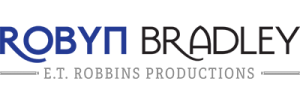Company Tagline Construction: What to Keep in Mind
I’ve been working with many clients lately who are rethinking their taglines or coming up with one for the first time. So I thought I’d write a post on some tagline “basics.”
What is a tagline?
In my mind, a tagline is a fun (yes, fun — we should all be having more fun, shouldn’t we?) way of branding what you do (or what your product does) in the minds of customers. The best taglines have staying power, and, over time, they can stand alone, meaning you could read or hear only the tagline, and you’d still know what it represents.
For example, I bet you can easily match the tags below to a company or product:
- Good to the last drop.
- We bring good things to life.
- When you care enough to send the very best.
But also keep this in mind: a tagline in today’s world is more than just a “line.” It’s a line that can create a whole new world of engagement for your customers and prospects…if it’s done right (more on this in a minute).
What are the Rules for Tagline/Slogan Creation?
I hate rules. Sounds so restrictive, and for every rule I give about taglines or slogans, I’m sure someone could easily give me a good example of someone breaking the rule well. So let’s call them guidelines.
- Figure out what you want your tagline to accomplish. Should it incite passion? Should it educate? Should it be risky? Should it be clever? Why? Think about your prospective audience and consider what they would appreciate.
- Brainstorm words you want associated with your business. Think specific and concrete, but don’t rule out thematic words like “enlightening” or “inspired.” A great place to look for words and phrases? Customer testimonials. Or ask your Facebook fans to shout out 2 or 3 words that describe your business, your service, your “essence.”
- Brainstorm words you don’t want associated with your business. You know, like “poopy” or “swamp ass.” Unless, of course, those phrases apply in a positive way.
- Now start brainstorming actual tags. Don’t edit yourself. And involve other people from your company. You never know where a brilliant idea is going to come from and you don’t need to be a writer or have a marketing degree to come up with something brilliant. However, when in doubt, hire a copywriter (like me! shameless plug!) to craft a tagline for you.
- Keep length in mind. Typically, taglines should be short, punchy, and memorable. What’s the definition of short? That depends. The best taglines typically (but not always) fall in the five- to eight-word (or so) category.
- Test, test, test. Test on current customers. Test it out with your Facebook fans (you could even turn it into a contest — have them vote for the best tag). Test it on people who know your business (e.g., your networking group, like BNI). Don’t allow people to simply say “I like this one.” Make sure they can explain why.
